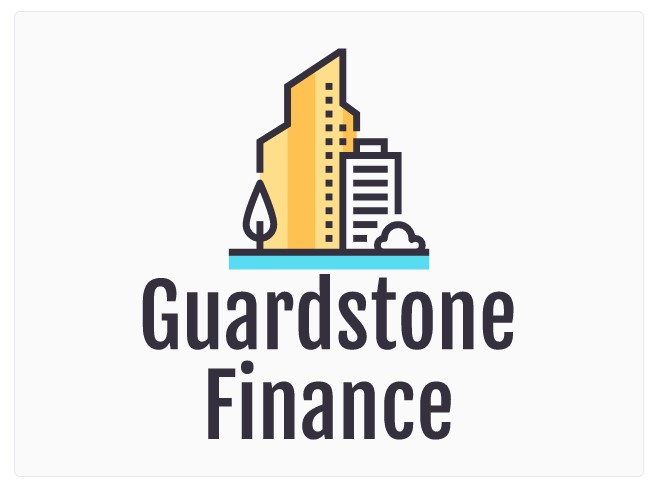
Find out if Guardstone Finance is ideal for your needs of equity release under 55. Guardstone Finance is a direct lender, so there are no fees. Here are the key features of the new product from 15th March 2025.
- Get a free, no obligation desktop based home valuation without delay
- Loan to value of up to 80%
- 4.89% fixed for life
- There are no valuation penalties for flats or other leasehold property titles
- No lender, product, adviser or broker fees
- Ideal to pay off an existing mortgage
- No upper age limit
- No fixed term or end date
- Ideal for debt consolidation
- Fee-free future further advances are subject to valuation


Is There A Strict Credit Check For Halifax Equity Release Under 55 Or Just A Soft Search To Confirm Your Identity?
Halifax understands the importance of financial opportunities for homeowners of all ages and the role equity release can play in providing financial flexibility. Regarding equity release for individuals under 55, Halifax approaches credit assessment with a view to inclusivity and support. The initial stages of inquiry typically involve a ‘soft search’—a preliminary check designed to confirm identity without impacting the individual’s credit score. This approach ensures that customers feel secure in exploring their options without the concern of immediate, stringent credit scrutiny.
The ethos guiding this process is one of enabling customers to make informed decisions with as little initial financial imposition as possible. Halifax’s policy fosters an environment where all potential borrowers, irrespective of their credit history, feel welcomed and accommodated. The soft search reflects this commitment, allowing a broader range of individuals to consider equity release as a viable option for their financial planning.
Should the application progress, a more detailed credit assessment may take place. However, this is conducted with the utmost transparency and with the intention of finding solutions that align with the borrower’s circumstances. Halifax’s approach is tailored to each individual, ensuring that the potential financial solutions are as accessible and as tailored as possible to meet their unique needs and goals.

What Is The Current Interest Rate For Halifax Equity Release For Under 55?
Halifax is reputed for crafting equity release options tailored to meet the needs of a diverse range of homeowners, including those under 55.
The interest rates offered are designed to be competitive and accommodating, reflecting the bank’s understanding of the financial landscapes its customers navigate. While specific rates are subject to market conditions and individual circumstances,
Halifax aims to provide attractive and fair rates, ensuring that younger homeowners can also benefit from the opportunities that equity release affords. The bank’s commitment to positive customer experiences means that the rates are set with a view to inclusivity and financial well-being, making equity release a more accessible option for a wider audience.

Does Halifax Release Equity In House Under 55 Have Good Reviews On Google Reviews, Trustpilot, Reviews.Io And Other Review Websites?
Halifax’s equity release products for those under 55 enjoy a positive reputation across various review platforms, including Google Reviews, Trustpilot, and Reviews.io. The feedback often highlights the bank’s supportive customer service and the transparent, customer-focused approach to financial solutions.
Many reviews reflect satisfaction with the simplicity and clarity of the process, and the competitive rates offered. Halifax’s commitment to providing tailored services to a diverse customer base is frequently mentioned, with many reviewers appreciating the inclusive and respectful engagement they have experienced.
This collective feedback underscores the bank’s dedication to maintaining high standards and its success in fostering trust and confidence among its clients.

Does The Halifax Equity Release Calculator Under 55 Show You The Loan To Value, The Roll Up Interest On An Annual Basis, And Any Early Payment Charges Or Redemption Penalties?
The Halifax equity release calculator for under 55 is a user-friendly tool designed to provide prospective clients with a comprehensive overview of their equity release options. It is crafted to show the loan-to-value ratio, offering users a clear picture of the amount they can release in relation to the value of their home. Moreover, the calculator presents a detailed projection of how interest may accumulate annually, employing a ‘roll-up’ interest model for clarity and transparency.
Additionally, the calculator is programmed to inform users about potential early payment charges or redemption penalties, ensuring that all financial considerations are visible from the outset. This feature aids in fostering a thorough understanding of the financial commitment involved, allowing individuals to make informed decisions. The calculator’s design reflects Halifax’s commitment to inclusivity and user empowerment, ensuring that the information provided is as accessible and helpful to as broad an audience as possible.

Does A Halifax Equity Release Mortgage Under 55 Have Fees Like Valuation Fees, Product Fees, Broker Fees Or Adviser Fees Added On To The Loan Amount?
Halifax’s approach to equity release for those under 55 is structured with a deep understanding of the importance of financial stewardship and transparency. The products are tailored to communicate all associated costs clearly, providing customers with a comprehensive knowledge of applicable fees.
Valuation Fees
Typically, a property valuation is essential to the equity release process, as it determines how much money can be released. Halifax handles this with care, often absorbing this cost or keeping it minimal to lessen the financial burden on the applicant.
Product Fees
Product fees, which cover the administrative costs of setting up the equity release mortgage, are usually modest and competitively priced. Halifax’s commitment to affordability means that these fees are kept reasonable and, in some cases, may even be negotiable or waived, depending on the product and promotion available at the time of application.
Broker and Adviser Fees
Broker or adviser fees are typically for the services provided by intermediaries in arranging the equity release. While these are standard in the industry, Halifax offers a selection of equity-release products that can be accessed directly, potentially saving customers from incurring additional charges.
Adding Fees to the Loan Amount
Understanding the need for flexibility, Halifax offers the option to add some of these fees to the loan amount, allowing customers to manage their immediate out-of-pocket expenses. This approach enables customers to preserve their savings and cash flow, which can be particularly advantageous for those under 55 who may still be balancing other financial commitments.
Overall, Halifax aims to keep the cost of equity release under 55 as manageable as possible, providing a clear schedule of fees upfront to ensure no surprises. Their customer-centric model is designed to support homeowners in making the best financial decisions for their circumstances, focusing on transparency and value.

If I Use Halifax Release Equity Under 55 Can I Use It To Pay Off My Existing Mortgage Instead Of Getting A Remortgage Or Secured Loan?
Certainly, Halifax’s equity release schemes for those under 55 are designed flexibly, addressing various financial needs, including the repayment of an existing mortgage. This approach allows homeowners to settle their current mortgage without entering into a new remortgage agreement or securing an additional loan.
Utilising Equity Release
The funds obtained through an equity release under 55 can be allocated as the homeowner sees fit to serve their financial strategy and objectives. Paying off an existing mortgage can be a wise financial move, freeing you from monthly repayments and possibly reducing your overall interest expenditure.
Financial Freedom
By using equity release to pay off a mortgage, you also open up the possibility of re-adjusting your monthly budget, potentially redirecting funds towards other investments, savings, or even lifestyle enhancements. This can be particularly advantageous for those under 55, looking towards long-term financial planning and stability.
Tailored Solutions
Halifax prides itself on offering solutions tailored to its clients’ unique financial situations. By opting for equity release to pay off an existing mortgage, clients can enjoy the flexibility that might not be as readily available through remortgaging or securing another loan.
In summary, equity release with Halifax under 55 presents a viable alternative to conventional remortgaging or secured loans, offering a pathway to financial fluidity and the potential to realign financial commitments better to suit individual circumstances and future aspirations.

With Halifax Releasing Equity From Your Home Under 55 Is There A Fixed Term Or An End Date, And Get Further Advances?
Halifax’s equity release options for individuals under 55 are crafted with a deep understanding of the need for adaptability in financial planning. The products are designed to offer a degree of longevity that aligns with the varied life stages and financial goals of younger homeowners.
Flexible Term Structures
Rather than imposing a fixed term with a rigid end date, Halifax’s equity release plans often come with a flexible term structure. This approach acknowledges that financial circumstances can evolve and, thus, provides homeowners with the necessary leeway to navigate their financial journey without undue pressure or constraints.
Further Advances
In recognition of the changing financial requirements that can arise over time, Halifax offers the possibility of further advances subject to eligibility and terms at the time of the request. This feature is particularly beneficial for homeowners who may foresee the need for additional funds in the future, whether for unexpected expenses, further property investments, or other financial manoeuvres.
Continued Support
Halifax is committed to offering continued support throughout the lifetime of the equity release product. The absence of a stringent end date and the possibility of further advances reflect Halifax’s commitment to delivering financial solutions as dynamic and responsive as the lives of the homeowners they serve. This customer-centric approach ensures that individuals under 55 have access to equity release options that are not only practical and accessible but also accommodating of future financial aspirations and needs.

Do Nationwide Equity Release Schemes Under 55 Have An Automated Desktop-Based Valuation, Or Does A Person Have To Visit The Property To Assess Its Value?
Nationwide’s equity release schemes under 55 are designed with customer convenience and efficiency in mind. To streamline the application process, Nationwide utilises advanced technology, including automated desktop-based valuations. This innovative approach enables a swift and accurate assessment of a property’s value, harnessing the power of data analytics and comprehensive market research.
Desktop Valuation Advantages
Using automated desktop valuations means that the initial property assessment can often be completed without needing a physical visit. This expedites the overall process and adds a layer of comfort for homeowners, as it minimises the intrusion into their personal space.
Personal Touch When Necessary
While desktop valuations serve as a quick and convenient starting point, Nationwide also recognises the importance of a personal touch. If there are unique aspects of a property that might not be captured through an automated process, or if the homeowner has made significant improvements that could impact the property’s value, Nationwide is prepared to send a professional to conduct an in-person assessment.
Balanced Approach
Nationwide’s balanced approach ensures that the equity release process is as smooth and customer-friendly as possible while maintaining accuracy and thoroughness in property valuation. This reflects Nationwide’s commitment to providing a positive and inclusive experience for homeowners under 55, ensuring they receive a fair and precise valuation of their property.

Is Nationwide Under 55 Equity Release Flexible If I Want To Pay It Back Early?
Nationwide’s under 55 equity release schemes are characterised by their flexible nature, which extends to loan repayment. Recognising that financial situations can change, Nationwide provides options catering to those who may find themselves able to repay their loan earlier than anticipated.
Early Repayment Options
Nationwide offers various repayment strategies, including the ability to make partial or full repayments. This can be particularly advantageous if you experience a change in circumstances, such as an unexpected windfall or an increase in disposable income, allowing you to adjust your financial plan accordingly.
Consideration of Circumstances
The institution acknowledges that every individual’s financial journey is unique. As such, Nationwide’s policies are crafted to avoid onerous penalties that could deter early repayment. Suppose a customer decides to repay their equity release plan ahead of time. In that case, Nationwide examines the situation intending to facilitate this process in a way that is as beneficial as possible to the customer.
Support and Advice
For those considering early repayment, Nationwide provides clear guidance and support. Customers are encouraged to discuss their options with a financial adviser, ensuring they make the best choice for their financial situation. Nationwide’s approach prioritises the financial well-being and satisfaction of its customers, ensuring that the equity release experience is positive and accommodating from start to finish.

If equity release under 55 is widespread in 2025, what is its future in 2025?
Equity release under 55 represents a significant financial decision that can unlock the value tied up in one’s home, providing a lump sum or additional income without moving out. With various lenders offering different equity release under 55 products, it is imperative to consider their terms, reputations, and the products they offer to suit various needs, including those with bad credit or seeking secured loans.
Starting with NatWest, their approach to equity release under 55 is often cautious, focusing on long-term customer security and sustainability. NatWest thoroughly assesses the applicant’s financial circumstances to ensure that equity release under 55is a suitable and beneficial solution.
Nationwide provides a broad spectrum of financial services, and its equity release under 55 schemes are no different. They are known for their customer-centric products and could offer flexible options for those under 55, considering the long-term financial planning necessary for such clients.
Barclays, a well-established financial institution, might also offer equity release products that allow younger homeowners to tap into the value of their properties. Their products could be tailored to provide a safety net for those with sufficient home equity, offering lump sums and drawdown facilities.

Lloyds is another prominent name in the equity release under 55 market. Their equity release plans under 55 could be designed to provide the financial freedom to manage retirement planning, debt consolidation, or home improvements.
Halifax, part of the Lloyds Banking Group, could offer equity release plans to under-55s with competitive interest rates and flexible repayment options. Their products might include features that allow for voluntary repayments, which can help manage the overall cost of the loan.
With its global reach, HSBC may not traditionally offer equity release products directly but could refer customers to trusted partners who specialise in this area. HSBC’s reputation for stringent risk assessment ensures that any referred equity release schemes would be from reputable sources, providing peace of mind for the borrower.
Santander could approach equity release under 55 with a range of options, offering both lump-sum products and drawdown facilities that provide a reserve of money to draw on as needed, which can be particularly useful for ongoing expenses or emergencies.

RBS has a history of providing various mortgage products and may extend its offerings to include equity release options for those under 55. Their focus would likely be on safeguarding the financial wellness of their clients through these products.
Although relatively new to the mortgage scene compared to some other lenders, Tesco Bank might develop equity release under 55 products that appeal to younger homeowners, considering their customer-focused ethos and competitive product range.
As a direct lender, TSB could offer a more personalised service in their equity release products. With a keen interest in the needs of the under-55 demographic, TSB could provide advisory services to ensure customers understand their options and the implications of equity release under 55.
For those with bad credit, finding a suitable equity release under 55 plan can be more challenging. However, some lenders specialise in products for such individuals, understanding that financial mistakes in the past should not entirely dictate one’s financial future.

West One could be one of the lenders offering secured loans, providing an alternative to traditional equity release schemes. Their secured loan products might be suitable for under-55s looking to release cash from their property’s equity without the full commitment of a lifetime mortgage or home reversion plan.
The landscape of equity release under 55 is diverse, with each lender bringing its approach and products to the table. From those specialising in bad credit solutions to secured loan options and traditional equity release under 55 schemes, the market caters to various financial situations. It is crucial for potential borrowers to diligently research and seek financial advice to ensure they choose a product that aligns with their financial goals and circumstances.
Equity release under 55, a financial mechanism allowing homeowners to access the value tied up in their property without having to sell it, traditionally targets those in or approaching retirement. However, individuals under 55 also seek ways to unlock this value, albeit options are more limited and come with specific conditions and challenges. In exploring these avenues, it becomes essential to consider the roles and offerings of major financial institutions like NatWest, Nationwide, Barclays, Lloyds Bank, Halifax, HSBC, Santander, RBS, Tesco Bank, and others within this context.
NatWest and Barclays, for instance, have been pivotal in providing homeowners with various mortgage solutions that might not specifically be branded as “equity release” for those under 55 but do offer ways to leverage property equity. These could include refinancing options or secured personal loans, which are secured against the borrower’s home. Similarly, Lloyds Bank, Halifax, and HSBC offer products that might cater to younger homeowners looking to tap into their home equity for reasons such as debt consolidation, home improvements, or significant life events.


Santander and RBS, along with the banks above, have been instrumental in addressing the needs of individuals seeking debt consolidation mortgages, especially those with less-than-perfect credit histories. For individuals under 55, consolidating debt into a single, more manageable loan can be a practical way to use their home’s equity to improve their financial situation. This is particularly relevant for homeowners looking for debt consolidation remortgages for bad credit or a debt consolidation mortgage with poor credit, where the secured nature of the loan can often provide more favourable terms than unsecured borrowing options.


Nationwide stands out not only for its mortgage products but also for its secured loans and home improvement loans. Nationwide secured loans offer another avenue for homeowners to utilise their property’s equity for large expenditures, including consolidating debts. Similarly, Nationwide home improvement loans are designed for borrowers looking to invest in their properties, potentially increasing their value over time.

Direct lenders are significant in the equity release under 55 landscape and related financial products for those under 55. Unlike traditional banking institutions, direct lenders can often offer more specialised products, including secured loans with instant decisions online, catering to the needs of homeowners seeking quick access to funds. Direct lender secured loans, for example, can provide a streamlined application and approval process for borrowers, making it a convenient option for those needing immediate financial relief or wishing to embark on time-sensitive projects.

The concept of “instant decision online loans” has gained traction, offering a rapid response to loan applications, which is particularly appealing in situations requiring swift financial decisions. Tesco Bank and TSB, among others, have ventured into this space, recognising the demand for quick and efficient lending processes that cater to the modern borrower’s expectations.

Santander secured loans and HSBC secured loans underscore the variety of options available to homeowners, including those under 55, seeking to leverage their home equity for financial gains or to meet specific needs. West One secured loans further exemplify the diverse secured lending market, highlighting the competition and variety of products available to consumers.

The landscape of equity release under 55 and related financial products for individuals under 55 is complex and multifaceted. While traditional equity release under 55 schemes may not be accessible to this age group, many alternatives exist, facilitated by banks and direct lenders.
Whether through debt consolidation remortgages, secured personal loans, or home improvement financing, major financial institutions and direct lenders offer a range of solutions for homeowners seeking to capitalise on their property’s equity.

Each bank and lender brings its own set of terms, conditions, and specialities, making it crucial for potential borrowers to thoroughly research and compare options to find the best fit for their unique financial situations and goals.
What is the youngest age to get equity release?
The youngest age at which one can typically take out an equity release product is 55 years with many lenders. Equity release schemes, such as lifetime mortgages or home reversion plans, are generally designed for older homeowners who have built up significant equity in their property and are looking to access this capital.
What does Martin Lewis think of equity release?
Martin Lewis, known for his financial guidance through Money Saving Expert, has expressed cautious views regarding equity release. He acknowledges that while equity release can offer a valuable source of income for homeowners over 55, it necessitates careful consideration due to potential long-term financial implications. Lewis suggests that equity release could be suitable for some individuals, depending on their need for cash and personal circumstances.
Can I get a 25-year mortgage at 55?
Yes, getting a 25-year mortgage at the age of 55 is possible. However, the options available to you may be influenced by various factors, including the lender’s policies and your financial situation.
Is there a better alternative to equity release under 55?
Indeed, there are several alternatives to equity release that you may consider, which can depend on your circumstances and financial goals. Here are some options:
Downsizing: Selling your current home and moving to a smaller, less expensive property can free up cash while potentially reducing your living expenses.
Remortgaging: You might remortgage your home with your existing lender or a new one to release some of the equity you’ve built up, although this would typically increase your monthly repayments or extend the term of your mortgage.
Retirement Interest Only Mortgage (RIO): This is a mortgage where you only pay the interest each month, with the principal loan amount typically repaid when you sell the property, die, or move into long-term care.
Renting out a room: If you have spare space, you could generate income by renting out a room in your property, with specific tax-free allowances available under the government’s Rent a Room Scheme.
Credit cards or personal loans: For smaller amounts, a low-interest credit card or a personal loan could be an alternative, although you need to be comfortable with the repayment terms and ensure it’s affordable.
Borrowing from family or friends: This could be a no or low-interest option, but it’s important to agree on the terms and have a repayment plan to prevent future disagreements.
Budgeting: Reassessing your finances to see if there are areas where you could cut back or save could improve your financial situation without needing to tap into your home’s equity.
Using savings and investments: It might be worth considering any savings or investments you have, though it’s advisable to get professional advice before doing so.
Grants or benefits: Check if you are eligible for government grants or means-tested benefits that could provide additional income or support.
Employment: If you can and it’s something you’re willing to consider, part-time or full-time employment could supplement your income.
It’s essential to weigh up the pros and cons of each option, as they all have different implications for your financial situation, lifestyle, and plans. For some, the cost and emotional impact of downsizing or the commitment of a new mortgage may not be suitable. In contrast, for others, the ongoing costs and interest associated with equity release may not be the best choice.
If you’re considering these options, discussing them with a financial advisor who can provide tailored advice based on your situation would be prudent.
